Introduction
To make credit easily available and and affordable, especially for some sectors the Government of India came up with the Interest Subvention Scheme. This scheme decreases the percentage of interest that borrowers are charged by offering a subsidy for loan interest rates. Through this reduction of the cost of borrowing the scheme seeks to encourage borrowing for productivity hence boosting development in the targeted sectors.
What is the Interest Subvention Scheme?

Interest Subvention Scheme is currently being undertaken but it is the Government of India that provides the same in a bid to subsidize the interest rates for certain sectors. It does this through giving a subsidy on the interest rate that accrues on the loans given to firms. This to some extent helps lower the borrowing cost of the eligible beneficiary.
It has two major aims. Firstly, it seeks to provide short-term credit facilities to farmers at cheaper costs. This helps to increase the yields and other outputs from the farming industries and businesses in the sector. Secondly, it can directly target different sectors, for example, micro, small, and medium enterprises (MSMEs) through subsidizing interest on loans to enhance their growth and productivity.
Benefits of Interest Subvention Scheme
The Interest Subvention Scheme offers several advantages:
- Reduced Borrowing Costs: Borrowers benefit directly from a lower interest rate on their loans. The government subsidizes a portion of the interest, effectively bringing down the cost of credit for the borrower.
- Increased Loan Accessibility: The scheme can incentivize lenders to provide loans to targeted groups, such as small and marginal farmers or micro, small and medium enterprises (MSMEs). This can make it easier for these borrowers to access much-needed capital for their businesses or agricultural activities.
- Promotes Growth: By easing the financial burden of borrowing, the scheme can encourage increased investment and economic activity. This can lead to growth in targeted sectors and the creation of new jobs.
- Rewards Prompt Repayment: Some schemes offer additional interest subventions for borrowers who repay their loans on time. This incentivizes responsible financial behavior and improves credit discipline.
- Improves Farm Income: In the case of farmers, access to cheaper credit can help them improve their yields and income by facilitating investments in better seeds, fertilizers, or irrigation techniques.
Who is eligible for the Interest Subvention Scheme?
The Interest Subvention Scheme offers subsidized loans to two main groups in India: and this includes farmers and residents of micro, small, and medium enterprises (MSMEs).
To the farmers, the scheme specifically enrolls small and marginal farmers having a Kisan Credit Card (KCC). They can also obtain short-term crop loans at say 2% rebate below the market interest whereas the government pays part of the interest borne by the bank. The scheme also provides a particular advantage to these farmers regarding the storage of produce after they have been harvested.
MSMEs can also benefit from the scheme in a way that they are given a subsidy on the next interest rate for a certain part of their working capital or term loans. However, there are some restrictions such as; the MSME is not qualified if it has another source of funds or is only engaged in trading.
Eligibility Criteria for the Interest Subvention Scheme
The Ministry of Micro, Small & Medium Enterprises (MSME) in India provides various incentives including an Interest Subvention Scheme to some categories of MSMEs.
To be eligible, an MSME must meet the following criteria:
- Valid Udyam Registration: MSME needs to be registered with a valid thirteen-digit Udyam Registration Number that is issued under the Udyam portal.
- GST Registration (For Most): In most cases, the Goods and Services Tax Identification Number or GSTIN is required to be valid. However, the exemption from GST registration can apply by Pan card or the bank where their loan account is categorized with the MSME.
- Loan Type and Amount: Working capital and term loans are eligible under the scheme to the maximum credit limit of ₹ 100 lakh.
- Loan Provider: The loan has to be provided by a Scheduled Commercial Bank only.
- Previous Support: Any MSME that is already availing interest subvention under any other scheme of central or state governments is excluded.
These are the essentials that would enable the MSMEs to receive certain advantages such as a reduction of interest rate on their loans to 2%.
How to Apply for the Interest Subvention Scheme?
- Check Eligibility: It is important to check the list of conditions that your business must meet before applying. This usually requires having a verified Udyog Aadhaar Number (UAN) or GST identification number for MSMEs. Certain schemes may contain extra criteria that could be related to the business type or the amount of loan to be requested.
- Identify Relevant Agency: The next step depends on which scheme you are looking for; you need to identify the implementing agency. This could be a government department, bank industry association, or a specific department within one of these industries. This should be provided on their website or the local office for further elaboration.
- Apply to Lending Institution: Upon ascertaining your eligibility and the particular agency, go to an eligible lending institution under the program. This could be banks or those particular financial institutions that are listed in the scheme guidelines.
- Submit Loan Application: You must then apply for the loan you need, but ensure that you specify your intention to take the Interest Subvention Scheme. This is the process by which the lending institution will be useful in guiding the candidate through their particular application procedures.
- Claim Interest Subvention: Sometimes, you may be forced to fill out an application for the interest subvention after loan approval and disbursement. The lending institution will generally do this, however it is best to check with them about such requirements.
Remember: The application process may vary depending on the social program of interest; therefore, students should consult the program of their interest for the most appropriate details. These are available on the website of the implementing agency or government department managing the scheme.
Important Documents Required for the Interest Subvention Scheme
The following documents are required for the Interest Subvention Scheme (ISS); however, depending on the specific scheme and the agency in charge of its implementation.
However, some general documents you can expect to need include:
- Application form: This information shall be obtained from the lending institution or the government agency for the scheme. Make sure that the details of it are filled in as thoroughly as possible and as honestly as well.
- Proof of identity: This could be a passport, voter ID card, or an Aadhar card.
- Proof of address: This could be a utility bill, a bank statement, or a ration card.
- Loan documents: In case you have borrowed any loan in the past, attach photocopies of the sanction letter of the loan and loan agreement.
- Business documents (for MSMEs): For schemes meant for Micro, Small, and Medium Enterprises (MSMEs), documents required could include a Udyam registration certificate, GST registration certificate, Business bank statements, and others if needed.
Additionally, the agency may ask for:
- Project proposal (for loan programs)
- General Income tax returns – concerning the loan schemes.
- Caste certificate (if applicable for special categories of caste)
Agencies Provide Interest Subvention Scheme
The following agencies/banks assist the Indian government in implementing Interest Subvention Schemes for different sectors: Here’s a breakdown:
- For Micro, Small, and Medium Enterprises (MSMEs): The Small Industries Development Bank of India (SIDBI) functions as the single national-level implementing agency.
- For Farmers:
- Public Sector Banks (PSBs)
- Private Sector Banks
- Small Finance Banks
- Cooperative Banks
- Regional Rural Banks (RRBs)
- National Bank for Agriculture and Rural Development (NABARD) – State Bank of India NABARD – Refinance to RRB&s and Cooperative Banks
These banks and agencies directly provide the money under the loans and recover the interest subvention from the government.
Conclusion
The Interest Subitization Scheme is still active, with the Indian government currently operating under it from 2022-23 to 2024-25. This means farmers and MSMEs can still access funds at lower interest on their loans through subsidies.
However, it is worth mentioning that the details of particular programs and their length may vary. For the latest information on the scheme and the target group or any change in the eligibility criteria, it is advised to consult the resources from the National Bank for Agriculture and Rural Development, NABARD, or the Reserve Bank of India, RBI.
FAQ
What is the Interest Subvention Scheme?
The Interest Subvention Scheme is a government program that reduces the interest rate on loans for eligible borrowers. This makes borrowing more affordable and encourages investment in specific sectors like agriculture or small businesses.
Who is eligible for the Interest Subvention Scheme?
Eligibility criteria vary depending on the specific scheme. It often includes factors like loan purpose, loan amount, and borrower category (e.g., farmers, small businesses). You can find the specific eligibility requirements for the scheme you’re interested in by contacting your bank or visiting the relevant government department’s website.
What is the interest rate benefit under the scheme?
The interest rate benefit also varies depending on the scheme. It typically involves a subvention of a certain percentage (e.g., 2% or 3%) on the interest rate offered by the bank.
How do I avail the benefits of the Interest Subvention Scheme?
If you think you might be eligible, approach your bank and inquire about the specific scheme you’d like to benefit from. The bank will guide you through the application process and the documents required.
Is there a limit on the loan amount for availing the subvention?
There might be a cap on the loan amount eligible for the interest subvention. This information is usually available in the scheme guidelines or by contacting your bank.


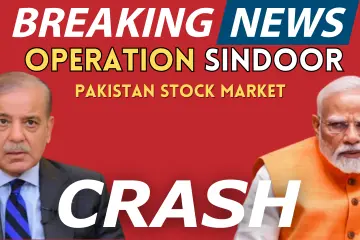




Leave a Review